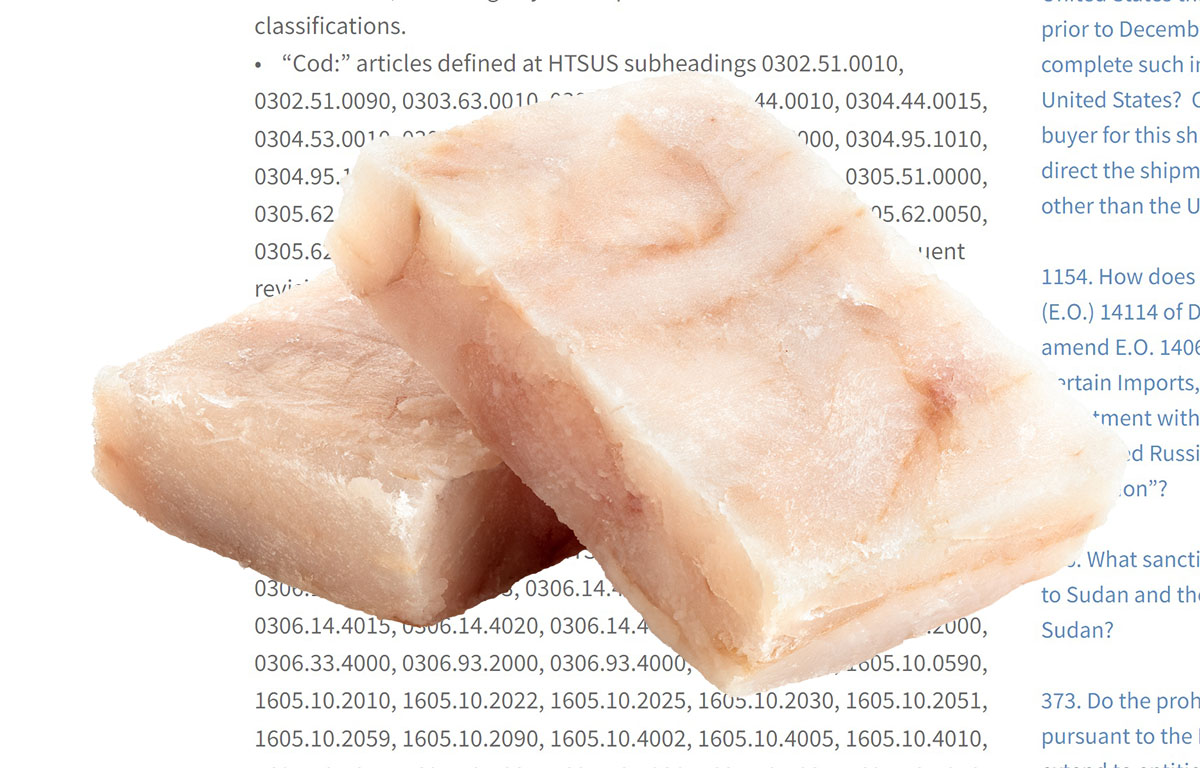The U.S. Department of the Treasury Office of Foreign Assets Control has issued new guidance that closes gaps in pollock tariff categories that were left open in a recent Biden administration order expanding a ban on seafood of Russian origin.
On 22 December 2023, U.S. President Joe Biden issued an executive order that expanded a U.S. ban on Russian seafood that includes imports of products that originated in Russia and were then processed in third countries, including China. The ban explicitly targets salmon, cod, pollock, and crab harvested by Russia, but prior guidance from the U.S. Department of the Treasury indicated only three pollock HTS category codes for pollock were included in the ban.
On 18 January, the department issued new guidance adding several HTS codes to the list.
Among the new products listed as banned are pollock with HTS code 0304.75.1000, or frozen blocks larger than 4.5 kilograms, of which the U.S. imported 10,222 metric tons (MT) worth USD 35.5 million (EUR 32.4 million) in 2022 – the most recent period for which data is available.
Another major product included in the new guidance is 0305.69.1042, or salted pollock fillets, of which the U.S. imported 2,093 MT worth USD 12.3 million (EUR 11.2 million) in 2022.
Other HTS subheadings listed in the new guidance include 0304.79.1010, or frozen pollock blocks larger than 4.5 kilograms, that saw 3,834 MT imported worth USD 10.8 million (EUR 9.9 million); 0303.67.0000, or frozen Alaska pollock, with 573 MT imported worth USD 1.6 million (EUR 1.5 million); 0302.59.5010, or fresh pollock, a category which had 592 MT imported worth USD 1.6 million (EUR 1.5 million); 0304.44.0025, or fresh pollock fillets, that had 55 MT imported worth USD 360,000 (EUR 328,000); 0304.95.1030, or frozen pollock meat weighing more than 6.8 kilograms, of which 219 MT was imported worth USD 823,000 (EUR 750,000); and 0305.69.1022, or salted whole/dressed pollock, of which 825 MT was imported worth USD 4.7 million (EUR 4.3 million).
Already in the ban and included in the new guidance were 0304.53.0025, or fresh pollock meat; 1604.19.1000, or pollock canned not in oil; 1604.19.2500, or pollock canned in oil – which all together accounted for 15,486 MT of imports valued at USD 45.4 million (EUR 41.4 million) in 2022.
Absent from the new guidance is 0304.73.5000, or frozen fillets, of which 176 MT imported worth USD 1 million (EUR 911,000).
The addition of new codes, Genuine Alaska Pollock Producers (GAPP) CEO Craig Morris told SeafoodSource, corrects what was formerly a mistake. Morris said earlier in January that GAPP was working on the issue and believed the omission of the HTS codes for most types of pollock was originally an oversight.
“Excluding Russian pollock from the U.S. market is the right thing to do, and we will continue to work with the Biden administration to ensure that the president's intent is fully implemented. That includes ensuring that all relevant Harmonized Tariff Schedule codes ... are always included in the administration's guidance to industry and any future rulemaking processes,” Morris said. “This will ensure Russian-harvested pollock will be fully covered by the U.S. sanctions regime targeting the Kremlin.”
Photo courtesy of Moving Moment/Shutterstock







